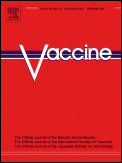Insufficient protection despite high vaccination coverage
In Uganda the majority of the children receive all vaccines in the vaccination program, yet they are not sufficiently protected from infectious diseases. A new study shows that there is a need for greater focus on when the vaccines are given, not only that they are given.

Hovedinnhold
Is vaccination coverage a good indicator of age-appropriate vaccination? A prospective study from Uganda Lars T. Fadnes, Victoria Nankabirwa, Halvor Sommerfelt, Thorkild Tylleskär, James K. Tumwine, Ingunn M.S. Engebretsen, for PROMISE-EBF-studien Vaccine, Volume 29, Issue 19 April 2011
Timely vaccination is important to protect children from common infectious diseases. In this study the researchers in this study assessed when vaccines were given (vaccination timeliness) and how often they were given (coverage) as well as coverage of vitamin A supplementation in a Ugandan setting.
The study used vaccination information gathered during a community-based trial promoting exclusive breastfeeding in Eastern Uganda between 2006 and 2008. Five visits were carried out to each of the children in the period from birth up to 2 years of age. A total of 765 children were included in the analysis. Time-to-event analysis was used to describe vaccination coverage and timeliness. Vaccination coverage at the end of follow-up was above 90% for all vaccines assessed individually that were part of the Ugandan vaccination program (EPI), except for the measles vaccine which had 80% coverage.
In total, 75% had received all the recommended vaccines at the end of follow-up. However, it was less common that the vaccines were given within the recommended time period, ranging from 56% for the measles vaccine to 89% for the BCG vaccine. Only 18% of the children received all vaccines within the recommended time ranges. The coverage for vitamin A supplementation at end of follow-up was 84%. The children of mothers with higher education had more timely vaccination.
Vaccination coverage proved to be reasonably high, but often not in the recommended time period. Many children are unprotected for several months despite being vaccinated at the end of follow-up. There is a need for continued efforts to optimise vaccination timeliness.
Read the full article here:
http://www.ncbi.nlm.nih.gov/pubmed/21402043
Related article:
Vaccination coverage and timeliness in three South African areas: a prospective study
